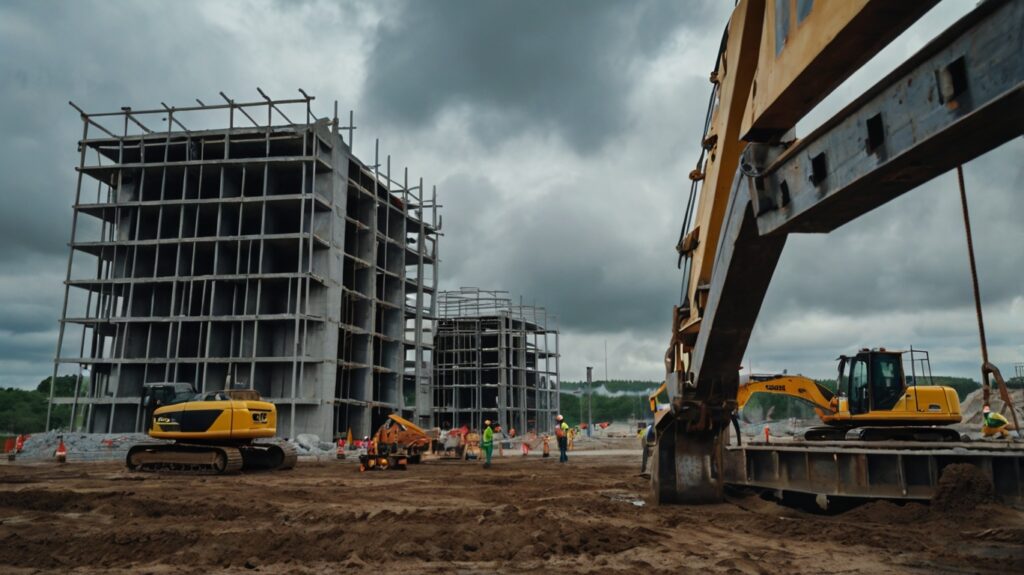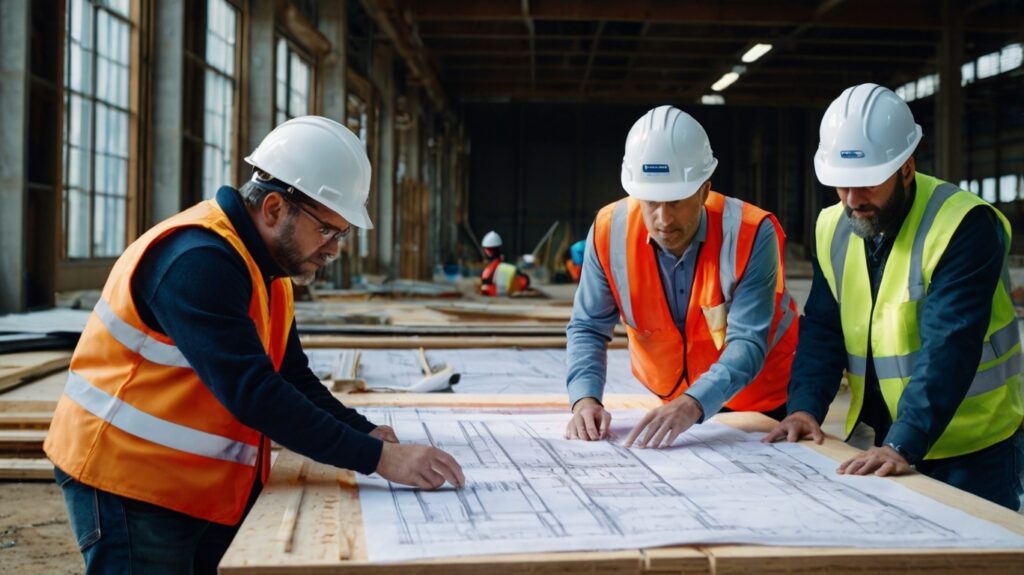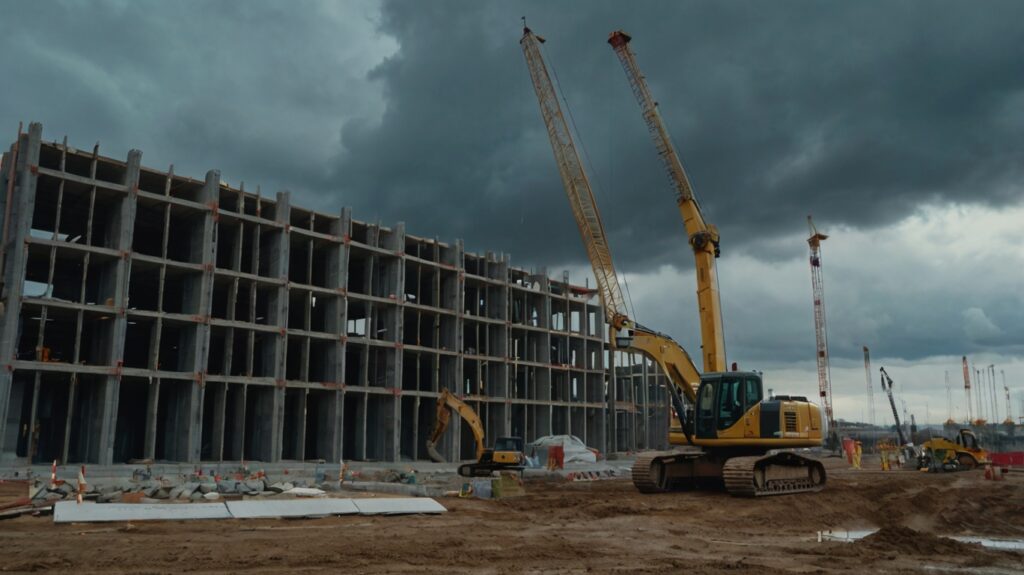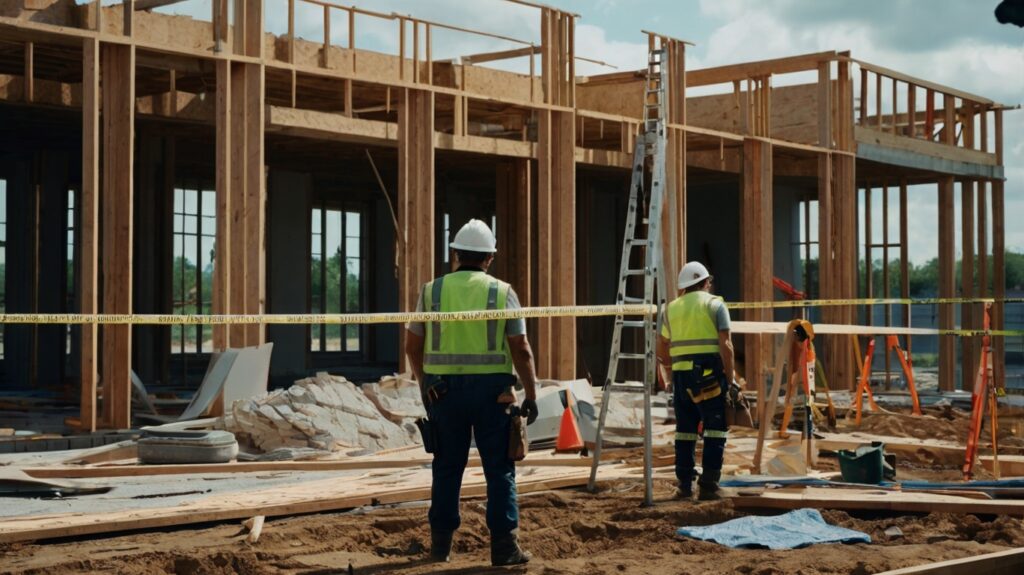- What is Builders Risk Insurance?
- Key Coverage Areas in Builders Risk Insurance
- The Role of Builders Risk Insurance in Construction Projects
- Factors Influencing Builders Risk Insurance Premiums
- How Builders Risk Insurance Protects Investment
- Common Claims and How to File Them
- The Impact of Site Conditions on Insurance Needs
- Legal and Contractual Considerations
- Choosing the Right Builders Risk Insurance Policy
Builders risk insurance is a specialized policy that plays a crucial role in protecting construction projects against the many risks inherent in the building process. Whether it’s damage caused by weather, theft, or accidental harm during construction, this insurance provides essential coverage that safeguards the investment of property owners, contractors, and developers. As a cornerstone of risk management in the construction industry, understanding builders risk insurance is vital for anyone involved in a building project.
1. What is Builders Risk Insurance?
Builders risk insurance, sometimes called course of construction insurance, is designed to cover buildings under construction, renovation, or expansion stages. This policy typically protects the structure, materials, and equipment on site from a variety of perils including fire, vandalism, weather-related damage, and more. Unlike standard property insurance—which covers fully constructed and typically completed properties—builders risk insurance specifically addresses the unique, temporary risks that exist during the construction phase, ensuring that both the work in progress and valuable assets remain insured.

2. Key Coverage Areas in Builders Risk Insurance
A builders risk policy is comprehensive, offering coverage in several key areas:
Coverage for Physical Damage: The primary focus is on physical damage to the building and materials being used. This includes coverage for events like fires, storms, cascading water damage, and other accidents that can significantly delay construction.
Coverage for Materials and Supplies: Materials stored on site or in transit to the site are covered under many policies. This ensures that if these supplies are damaged or lost, the project does not suffer from additional financial burdens.
Coverage for Equipment: Construction often involves the use or rental of heavy machinery and specialized equipment. Builders risk insurance can cover this equipment against theft, vandalism, and accidental damages, reducing disruptions to the project.
Debris Removal and Increased Costs: Some policies include provisions for the removal of debris and additional expenses incurred during the reconstruction or repair process after an incident, which can be significant during a large-scale construction project.
3. The Role of Builders Risk Insurance in Construction Projects
Builders risk insurance serves as an essential safety net throughout the duration of a construction project. It protects stakeholders from unforeseen setbacks that might otherwise derail progress. During construction, several parties including property owners, general contractors, subcontractors, and lenders face risks. This policy not only minimizes financial losses but also provides a structured approach to handling claims and repairs, ensuring that projects can continue with minimal interruption. By providing a clear framework for managing unexpected events, builders risk insurance helps maintain project timelines and budget estimates.

4. Factors Influencing Builders Risk Insurance Premiums
Premiums for builders risk insurance are determined by a variety of factors, each of which can have a significant impact on the overall cost:
Type and Value of the Project: The scale and complexity of the construction work significantly influence premiums. Larger projects with higher property values, expensive materials, and specialized equipment have higher premiums due to increased exposure to risk.
Duration and Construction Stage: The length of the construction project and its current stage are important considerations. Projects in the early design or material-intensive phases might attract different premium levels compared to those nearing completion.
Location and Site Conditions: Geographic considerations such as exposure to natural disasters, local crime rates, and environmental conditions have a direct influence on premium costs. Areas prone to hurricanes, floods, or other natural hazards will typically see higher insurance rates.
Safety Measures and Risk Management Practices: Projects that employ rigorous safety protocols and risk management strategies tend to receive lower premiums. Demonstrating a commitment to safety and proper site management can help in negotiating favorable rates.
5. How Builders Risk Insurance Protects Investment
Investments in construction projects are significant, both financially and strategically. Builders risk insurance is a safeguard that protects these investments at every crucial phase of a project. By covering unexpected damage or loss, the policy reduces the financial risk associated with unforeseen events. In the event of destruction, theft, or damage, builders risk insurance can provide the funds necessary to repair or reconstruct a structure. This ultimately helps to preserve the overall value of the project for developers, lenders, and property owners. Moreover, ensuring that construction continues smoothly without massive financial setbacks builds confidence among investors and stakeholders, enhancing the feasibility of future projects.
6. Common Claims and How to File Them
Builders risk insurance claims can arise from various incidents. Common claims include damage from natural disasters, accidental fires, vandalism, and theft of materials or equipment. The process of filing a claim typically involves the following steps:
Immediate Notification: As soon as damage or loss occurs, it is crucial to notify the insurance provider promptly. Many policies specify a deadline for notification, and delays can result in a denial of the claim.
Documenting the Damage: Thorough documentation, including photographs, inspection reports, and detailed inventories of lost or damaged materials, is essential. This information supports the claim and helps determine the payout.
Working with Adjusters: An insurance adjuster is usually assigned to assess the damage. Cooperation with the adjuster, by providing access to the site and necessary documentation, ensures a clear and timely review of the claim.
Review and Settlement: After investigation, the insurance company calculates the amount payable under the policy’s terms. Understanding the policy’s specifics such as deductibles and coverage limits is important during this phase.

Effective claims management can expedite repairs and reduce downtime, ensuring that construction can resume with minimal delays.
7. The Impact of Site Conditions on Insurance Needs
Not all construction sites present the same level of risk. Site conditions play a substantial role in determining both the extent of coverage and the associated premiums. Factors such as topography, proximity to water bodies, and local weather patterns can influence the likelihood of damage. For example, a construction site in a coastal area may require additional coverage for wind and flood damage. Similarly, a site in an urban center might face a higher risk of theft or vandalism. Evaluating these conditions is a crucial part of risk management, allowing policyholders to ensure they have sufficient coverage aligned with the specific challenges of the site.
8. Legal and Contractual Considerations
Legal and contractual factors are critical when it comes to builders risk insurance. Construction contracts often include clauses requiring comprehensive insurance coverage to protect all parties involved in a project. Lenders and investors typically mandate that a builder’s risk policy be in place as a condition for financing. Furthermore, understanding local jurisdictional requirements is necessary, as laws and regulations can vary significantly between regions. Ensuring that the insurance policy meets all legal requirements not only protects against potential liabilities but also smooths the process of project completion and future ownership transfers.
9. Choosing the Right Builders Risk Insurance Policy
Selecting an appropriate builders risk insurance policy involves carefully balancing coverage needs with cost efficiency. Different projects have unique requirements, and it is essential to compare policies based on the extent of coverage offered as well as the specific risks associated with the project. An informed decision includes reviewing policy limits, deductibles, coverage inclusions, and exclusions. Engaging with a knowledgeable insurance broker who understands the nuances of construction insurance can provide tailored advice that aligns with the project’s budget and risk profile. Ultimately, the right policy not only protects valuable investment but also supports the overall success and continuity of the construction project.
Builders risk insurance is an indispensable component of construction project planning and management. By providing reliable coverage against a host of potential risks, the policy aids in mitigating unexpected financial burdens and ensuring that projects can be completed on time and on budget. Whether you are a property owner, developer, or contractor, understanding the various aspects of this insurance—from its fundamental purpose and key coverage areas to the factors that influence premiums and the process for filing claims—is essential. Not only does builders risk insurance protect the investment, but it also instills a sense of security, allowing involved parties to focus on the successful completion of their projects without undue concern over unforeseen setbacks.
A well-crafted builders risk insurance policy addresses challenges ranging from fluctuating site conditions and variable risk factors to legal and contractual obligations. It is an agreement that reassures all stakeholders that despite the unpredictability of construction, there is a robust safety net available to support recovery and continuation. Evaluating the policy with a keen eye on coverage specifics and site demands, choosing the right policy becomes a proactive step towards building resilience and fostering long-term success in the construction industry.

Conclusion
In conclusion, builders risk insurance represents a critical investment for anyone involved in construction. Its comprehensive protection of physical assets, handling of potential claims, and alignment with legal requirements make it an essential tool for managing the inherent risks that every construction project faces. By choosing the right policy and understanding its many facets, builders, developers, and property owners can secure their investments, ensuring that even if the unexpected occurs, they are well-prepared to navigate the challenges and keep their projects on track.
